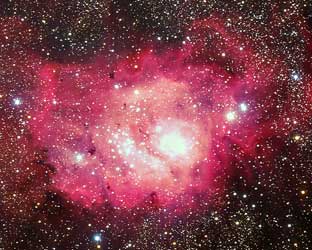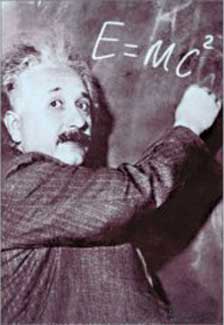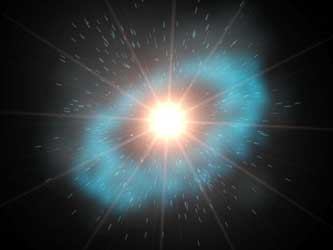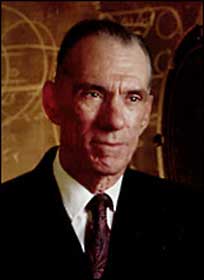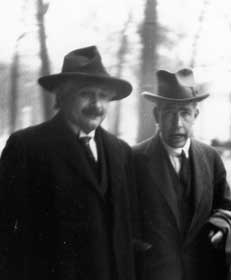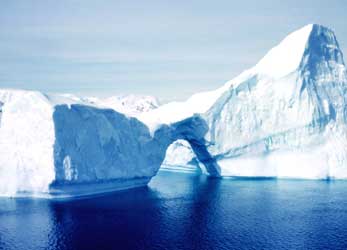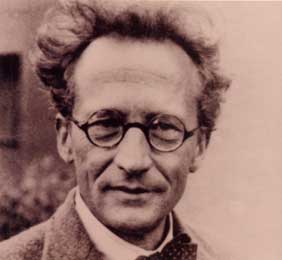 |
 |
 |
 |
| Volume 4 - Issue 11 NOVEMBER 2006 |
|
|
MUSINGS FROM PRASANTHI NILAYAM THE GLORY OF CONSCIOUSNESS – By Prof. G Venkataraman
You might have heard the phrase, Sat, Chit, Ananda. It means roughly, Truth, Consciousness, and Bliss. That is how God is sometimes described. In other words, at the Abstract and Absolute level, God is also described as Pure Consciousness or Absolute Consciousness. Now what exactly is this Consciousness? What has it got to do, if at all, with Creation? What does science have to say, if anything, about this Consciousness? These are some of the questions that I would like to address in this talk. Before I do, I must make it perfectly clear that there is no need whatsoever to know the answer to these questions if one wants to merge with God. Our bhakti would in no way be enhanced if we know something about these aspects. On the other hand, it does help us to appreciate how deep was the understanding of the ancient Seers, who were in quest of God. I feel that in this day and age, when people are always asking all sorts of questions, it might be useful to put Creation itself against the background of Pure Consciousness or Absolute Consciousness, as God is sometimes referred to. That, you might say, is my motivation for this talk.
Similarly, it is often said that a lot of energy is locked up within an atom. Indeed. But atomic energy that is latent cannot be seen. However, when the energy that is locked up in the atom is released, then the effects generated by that release can be seen
Insentient and Sentient Matter OK, there is matter and energy in the Universe and though they might appear to be distinct entities, they are really one and the same thing. Further, matter can be converted into energy and energy can be converted into matter. So what? That is the point I wish to take up next, but before I do that I ought to draw your attention to a fact you already know, namely that matter in the Universe can be of two distinct types: insentient and sentient. Insentient means no life, and sentient means having life.
Did it suddenly pop up from nowhere when life first appeared on earth, or has it been latent in the Universe in some mysterious form right from the time the Universe came into existence?” I must tell you at this juncture that few scientists publicly discuss such issues. A handful of scientists have no doubt wondered about such issues, but the mainstream, that is to say 99.9999% of the scientists simply ignore such questions. They know they cannot get any definitive answers and cannot publish any papers on this topic in the standard scientific journals. Since these are days of “publish or perish,” most scientists leave such questions severely alone. However, the questions remain and I wish to consider them and air some views about them. The first thing I would like to point out in this context is that self-awareness is part of our ability to have experiences. Many things we know come to us from experience. Let us take a simple thing like taste. Taste, you will agree, is a matter of experience. We are able to have the experience of taste because the Blessed Lord has been kind enough to give us taste buds. Let us say that we put a small piece of sugar in the mouth. It would, of course, taste sweet. Everyone in the world irrespective of race and religion would swear that sugar is sweet. You might argue, what is the surprise in that? I am not saying there is anything surprising about sugar being sweet, but have you ever wondered whether what you experience about sugar tasting sweet is the same thing as what X or Y experiences? Experience: Internal and Subjective There is an important point here. Experience is internal to a person and as a result, there is no way of comparing the experiences of two persons on an objective basis. It is true science can analyze sugar, describe the molecular structure, and all that, but there is no meter or measuring instrument that science can ever come up with for measuring the experience of sweetness. It is the same with self-awareness. Science can say whether an entity is dead or alive but it cannot ever deal with any subjective experience. We need not condemn or criticize science for that; that is the way it is presently structured. However, practitioners of science should not feel high and mighty and look down upon people who wish to consider metaphysics. That feeling of condescension is totally unwarranted but, unfortunately, is present in many modern upstarts. Such arrogance flows from ego and is not the hallmark of a true scholar who is always quite humble.
Matter and energy now in the Universe can be tracked back all the way to the Big Bang. What about the mysterious entity that confers on us the capacity for self-awareness, and also grants us the ability to have experiences associated with the senses, that is, the ability to have the experience of sight, sound, taste, feeling and smell? Is there a mysterious Something beyond matter and energy that confers the ability to have internal experiences? Wherefrom did this ability come? Did it pre-exist the Big Bang or did it sort of evolve as species evolved? If so, how did this thing beyond matter and energy originate during the life-evolution process? Many questions there! I should, at this juncture, point out that science too is faced with some basic questions of a similar nature. Today, there is hardly any scientist worth the name who doubts the fact that our Universe originated in the so-called Big Bang about fourteen or so billion years ago. It is also agreed that space and time came into existence along with the Big Bang. This immediately raises questions like: “Where did the Universe draw the big reserve of energy it started off with? Does our Universe have a ‘mother’, from which it was born?” These are questions that are being actively considered by some cosmologists and there are also some theories concerning this question. Interestingly, ancient Indian sages have also speculated on some of these issues and have spelt out their model, if I might call it that. In essence, it all started with what I have referred to earlier as Absolute Consciousness. Remember that Absolute Consciousness is just another name for God, and this particular name focuses on an aspect of current interest to us.
I want you to appreciate an important point here. Vedanta does not in any way contradict modern science, especially the latter’s reconstruct of the origin of the Universe and its subsequent evolution. As far as the scenario preceding the Big Bang is concerned, scientists are still speculating and I am not sure if any of these speculations can ever be proved. That means that if scientists dismiss Vedanta’s picture of the pre-Big Bang scenario as mere speculation, then they are doing no better. Consciousness is beyond Matter and Energy I wonder whether you have been able to catch what I have been trying to drive at all along. Basically it is this: Firstly, there is in living beings a unique capacity called Consciousness. Secondly, this Consciousness is not the same stuff as matter and energy. Thirdly, Consciousness must have been present right from the time our Universe came into existence as some kind of a cosmic background. There are a few other points I would like to make about Consciousness and its role in evolution, but before that, I would like to address one important question.
Scientific Experiments in Consciousness To cut a long story short, Jahn started his experiments and found, much to his surprise, that there seemed to be something besides matter and energy. Jahn was not too eager to accept his findings and so he made his subsequent experiments more and more rigorous, with tight controls and all that, and every time he was confronted with the same finding. Slowly and reluctantly, Jahn came to accept that mind and matter could interact and he hypothesized that this interaction occurred via Consciousness. I shall come to that a little later, but for now, let me give you a glimpse of Jahn’s experiments. Jahn performed many experiments, but the most important of them was concerned with mind-machine interaction. Here is a brief description of that experiment. Jahn first built a machine called the Random Event Generator. This machine basically produces a series of time pulses occurring at random instants of time. There are rigorous tests to check if the output of the machine is truly random or not. Having built the machine, Jahn then had a volunteer sit for a considerable period of time before the Random Event Generator and constantly think: “Hey machine, stop being random, stop being random…” You would think this is a pretty crazy thing to do. But Jahn’s idea was this. If the person is willfully trying to change the behavior of the machine by sheer thought process, would the machine respond? The scientist in him told him it would not; but the investigator in him said wait for the result before deciding. Mind Over Machine So what did Robert Jahn find? He found that many volunteers who were highly focused did manage to disturb the machine and make it depart from its usual random behavior. It took a long time for Jahn to be convinced about this, but when he was, he started devoting all his time to the interaction of the mind with matter. After decades of intensive research, Jahn came to the conclusion that Consciousness was a field, rather like the electromagnetic field, and the gravitational field very familiar to physicists. Jahn also published many papers on what he describes as the quantum theory of the Consciousness field. How much acceptance is there of Jahn’s idea in the scientific community? Not much, I am afraid. To start with, not many have bothered to study his writings. Among those who have, the friends of Jahn shake their head and mutter, “Poor Robert, whatever happened to him? Why is he wasting his time doing this kind of research instead of the kind he is so good at?” The others who know him but are not so kindly disposed say something to the effect, “This guy Robert Jahn, he has gone bananas!” The neutral community severely attacks his experiments as lacking in rigor in statistical analysis and dismisses it as pseudo-science, or junk science. By the way, many experiments, even in mainstream physics, have been buried on the ground of lack of statistical rigor. Often, especially when it comes to unconventional areas, many an experiment is laid to rest with the obituary, “Here lies a victim of pseudo-science, who died due to lack of statistical rigor.” But all this has not stopped a few brave researchers from following the lead of Jahn to conduct their own studies, and many have, with their own variations of Jahn’s experiments, concluded that there is such a thing as Consciousness. I suppose that all this might sound amusing to believers in Consciousness. After all, have we not seen people getting cured from near-death illness through sheer prayer? How can prayer that originates in the subtle mind and even more subtle heart affect the biochemistry of a sick body? There must be some mind-matter interaction. I believe, as does Jahn, that this interaction occurs through the intervention of the Consciousness field.
You see, quantum mechanics implied that events happened not in a deterministic manner, as classical theory demanded, but in a probabilistic manner. This idea was totally unacceptable to Einstein. It is interesting that Einstein dethroned Newtonian mechanics, which was classical. But in a sense, even Einstein’s relativistic mechanics was classical, being an extension of Newton’s mechanics. It did not therefore have any room for random behavior. So strong was Einstein’s objection that he and his good friend Niels Bohr argued vehemently over many years. Einstein would start by describing an imaginary experiment – he used the German word gedanken experiment, a word that has since become a part of physics vocabulary. Einstein would describe the experiment and argue how it violated quantum mechanics. Bohr would then get up, clear his throat, and say, “Ah, but you see Professor, you have overlooked this point.” Bohr would then go on to show that Einstein’s reasoning was flawed, and that therefore his objections were not correct. At one point Einstein simply brushed aside all of Bohr’s objections with the words, “God does not play dice,” meaning quantum mechanics cannot really be true. This went on for about three years, until in a famous encounter Einstein came up with yet another gedanken experiment, the mother of them all. This one looked iron clad and invincible. So it seemed, till Niels Bohr got up and pointed out a subtle but fatal flaw.
Physics and Vedanta Now why am I mentioning all this? What connection does it have with Vedanta? That is what I shall consider next. You see, Einstein was not entirely done. The Einstein-Bohr debates took place just before 1930 or so. Soon after that, Hitler came to power in Germany and Einstein, being a Jew, left for America because Jews had no place in Hitler’s Germany. Einstein went to Princeton, and there in 1936, he published a paper in which he proposed yet another gedanken experiment, which revealed a major internal contradiction in quantum mechanics.
Experiments Point to Global Connectivity There matters stood until the seventies. People had almost forgotten the debate and only philosophers worried about it. But then one fine day, thanks to remarkable advances in technology, many scientists, particularly in France, began to actually conduct experiments that were once considered to be just thought, or gedanken experiments. And what did they find? They found that Bohr was indeed right. In other words, notwithstanding Einstein’s firm faith in relativity coming to the rescue, quantum mechanics did work. This then raised a deep philosophical question. Einstein said that if quantum mechanics works then it means that signals can travel faster than light; but that is not possible. However, scientists had now demonstrated that quantum mechanics was working even in the EPR experiment. Did that imply something was traveling faster than light; did this mean that relativity was out? The pundits thought about it all and finally said, “Not quite. There is actually no signal traveling and so there is no question of any violation of relativity. What was happening in the French experiments was a strange and subtle connectivity that linked everything on a global scale. If one ignored this global connectivity and looked at things piecemeal, then one would have to invoke signals traveling and all that; but if one kept subtle global connections in mind, then there is really no contradiction with relativity.”
Prof. Chew of California puts it more crisply: The only individual is the whole Universe! If you think about it, this is an amazing statement coming from a physicist. What Chew is saying is that there are not many but just One! And this Oneness is conferred upon entities that our senses perceive as many, by a mysterious Something that appears to be beyond space and time. Quantum mechanics would fail if there were a real disconnect, because then relativity would come into the picture and scuttle quantum mechanics. God Must Be Beyond Space and Time Now why is this Something that confers oneness, beyond space and time? Because if it were bound by space and time, it would have to respect relativity. But this mysterious Something seems to be exempt from relativity, which can happen only if it is beyond space and time. This is a remarkable finding of modern science, and yet very few people seem to be bothered about its philosophical foundations. I maintain that this mysterious Something that bestows the universal connectivity of Oneness is nothing but what we call Consciousness. And clearly, Consciousness is beyond space and time. This raises many questions like: “Was there Consciousness all along right from the birth of the Universe or did it manifest only when living beings came into existence?” According to me, the answer is simple. Consciousness has always been there, indeed even before the birth of the Universe. And, according to Vedanta, the Universe actually originated from Primal Consciousness. The Role of Consciousness in Evolution OK, so what role did Consciousness play, if at all, during the evolution of the Universe? I believe that right from the moment of the Big Bang, Consciousness was like an invisible backdrop against which all evolution took place. This prompts the question, “Does that mean that inert matter has Consciousness?” I would think that the French experiments that settled the EPR issue suggest that inert matter also is pervaded by Consciousness – remember EPR refers to the problems posed by Einstein in 1936. Devotees might at this point recall the famous story of the weeping saris. No doubt Hislop has narrated this story, but I shall quote for you Swami’s version of the same incident. This is what Swami says: I asked that a hundred saris be brought so that I could select some for distribution to the women workers at Anantapur who were helping to build the Sathya Sai College there. I selected 96 and asked them to return four to the shop. Later when I passed the table on which the four discarded saris were kept, it was noticed that the cardboard box which contained the four saris was dripping tears! They were weeping that they could not get appreciation from Me. Hislop was standing by the side of the table. Yes, they had shed tears! Through this remarkable incident, Swami taught Hislop that even so-called insentient or inanimate matter has Consciousness or awareness. This brings me to the central point about the role of Consciousness in evolution. I believe the following:
Passive and Active Consciousness
Climbing the Ladder of Consciousness Next, the question of “how much” of this Consciousness is present in the various living beings, and what exactly it does. Here again, I shall offer a plausible picture. I believe that amongst living creatures, the role of Consciousness increases, even as their sense organs evolve and develop. What I mean is the following: In the lowest form of living creatures, there are no eyes, ears, etc., the way we know them. Yet, these creatures do have some sense of awareness they exist, and of the external world surrounding them; that is how they adjust to their environment. In such creatures, I would imagine, the manifestation of active Consciousness would be at a low level.
The Capacity of Human Consciousness: Awareness of the Creator We now come to human beings. Here, Consciousness really blossoms. You see, in the case of animals, their capacity for being conscious is restricted to the awareness of the external world. This capacity to be aware of the external world is needed for survival, and that is why God has given that capacity. Humans too have that capacity, for they too need to survive. But thanks to the power of the human brain, which, incidentally, is also a blessing of God, humans can not only see and experience the external world, but can even manipulate it. For example, man explores for oil that is underground and then pumps it out, sometimes even from under the sea.
It is the view that this Universe breeds life and Consciousness because Consciousness is its source, because the Universe is ultimately made of this mind-stuff. What we recognise as the material Universe, the Universe of space-time and elementary particles and energies, is actually an Avatar, the materialisation of Primal Consciousness. In that case, there is no waiting for Consciousness to arise. It is always there, at the beginning and at the end. What we wait for in the evolution of life is only the culminating Avatar, the emergence of self-conscious bodies that can articulate Consciousness, that can give it a voice, a culture, literature and art and science.
Now why am I mentioning this? For a good reason. You see, if you compare a dead planet like Mars with the earth, you would find an incredible variety on earth which you would not find in any other planet in the solar system or, for that matter, on any planet anywhere, not having life. It is only life that endows earth with so much beauty and diversity. Just look at the plants and trees – what a wonderful variety we have, from the grass to redwood trees! And then take the fishes, birds and animals; what a wonderful and colorful variety there is! Have you ever seen pictures of coral formations under the sea? How wonderful they are! The Glory of the Manifestation of Consciousness Wherever we look, there is a special beauty not found on planets without life. There is a wonderful glory of the manifestation of Consciousness, or God, everywhere on this living earth, and this is what George Wald refers to as the Avatar. And the crowning glory is the human being who has the special capacity to recognize God. But, alas, man often does not bother to recognize either the presence of God all around him or the presence of God within him. That is why God the Formless has to don a human form and educate man as He is doing right now. I hope I have motivated you to spend sometime contemplating on this thing called Consciousness and see in the larger perspective what our Vedic seers always saw. Such a perception is more necessary now than ever before, considering the dangers facing humanity and the planet earth. I think I have said enough. Let me remind you once again, this is the last and concluding talk in my long series entitled The Veda Walkthrough. I have been doing musings for over two years now, and this is the first time I have attempted a long series like this. I do hope it has been of some use to you. That’s all I have to say for the present, and I thank you for being with me throughout this Walkthrough. I hope it benefited you as much as it did me. God Bless and Jai Sai Ram.
|
||||||||||||||||||||||||||||||||||||||||||||||||||||||||||||||||||||||||||||||||||||||||||||||||
| You can write to us at : h2h@radiosai.org |
Vol 4 Issue 11 - NOVEMBER 2006
|
Best viewed in Internet Explorer - 1024 x 768 resolution. |
DHTML Menu by Milonic. |
